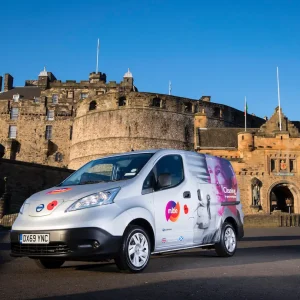Businesses continue to assess their mobility requirements to ensure they are fit for today and tomorrow in a world where working habits have been radically changed by hybrid working.
Although they’ve been around for a long time, there’s still confusion surrounding how car clubs work and how they can help keep employees mobile, and this is not entirely surprising.
There are, in essence, three different corporate car club plans available – ‘dedicated,’ ‘virtual’ (also known as ‘pay-as-you-go’) and ‘hybrid’.
Dedicated car clubs are when vehicles are located on-site at the customer location and their use is entirely controlled by that employer.
This is ideal for businesses wanting a more flexible alternative to pool cars. A dedicated car club guarantees sole access to vehicles of their choice precisely where they’re needed.
The number of dedicated car club vehicles can be increased or reduced according to the specific requirements of employees at the company location.
Businesses can also work with the supplier to identify the best type of vehicles to meet their needs. For example, they can introduce dedicated electric car club vehicles at locations where there is on-site charging, or a mix of cars and vans to support different user types.
This can provide a golden opportunity for employees to trial EVs, which many might not have had a chance to drive before.
A virtual or pay-as-you-go car club is where vehicles are sited in optimal locations on streets or car parks and are available for anyone to use.
Employees enjoy the convenience of collecting a car or van from a bay near their home or work, or somewhere else where they may be travelling, such as near a railway station on a longer trip. Many operators don’t charge customers a penny if bookings are cancelled five hours before they’re due to take place.
This option is particularly useful for employees who now largely work from home as it removes the need for them to own their own vehicle.
The hybrid approach includes both: exclusive access to vehicles on-site, plus access to the on-street car club vehicles in other towns and locations.
Once the best plan has been determined according to a fleet’s size and specific requirements, it’s essential to explain how the car club works to the employees who will be using those vehicles in the clearest and most appropriate way possible.
This high-touch approach consistently ensures that the greatest number of people have the best understanding of how to maximise their car club’s potential.
Drivers are more likely to leave their own vehicles at home – thus reducing grey fleet mileage – and use the car club for business trips once they fully understand how easy the booking process is when compared to that for pool cars.
Specific departments within any organisation can have complete visibility over their employees’ use of the car club by using booking codes when a reservation is made online or using the app. This ensures that each team can keep track of their usage and its associated costs to better allocate resources.
Businesses can also explore generating revenue for their organisation from dedicated car club vehicles sited on business premises by allowing employees and locals to book the cars out of hours.
Once a colleague is enrolled as a business car club member, there may even be the opportunity to book car club vehicles for personal use.
The potential for car clubs to work seamlessly as part of a travel policy is clear and there are many benefits.
Employees have the option to leave their own car at home as they know there will be a vehicle at work if they need it for a business trip. It promotes use of shared and active travel, decreases congestion and business mileage while simultaneously assisting with duty of care.
There’s real value in taking a strategic approach based on a company’s individual requirements, implemented with a car club operator with the scale and expertise to meet all expectations.
Paul McCorkell is director of business rental UK & Ireland at Enterprise





